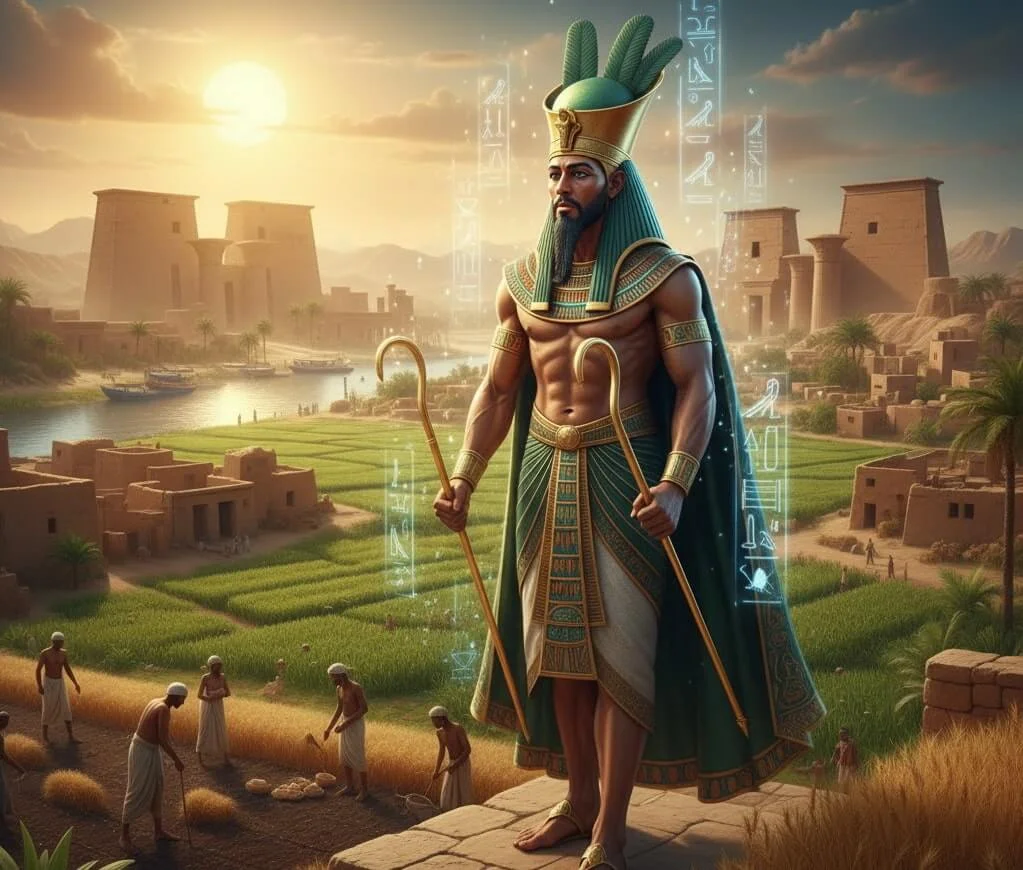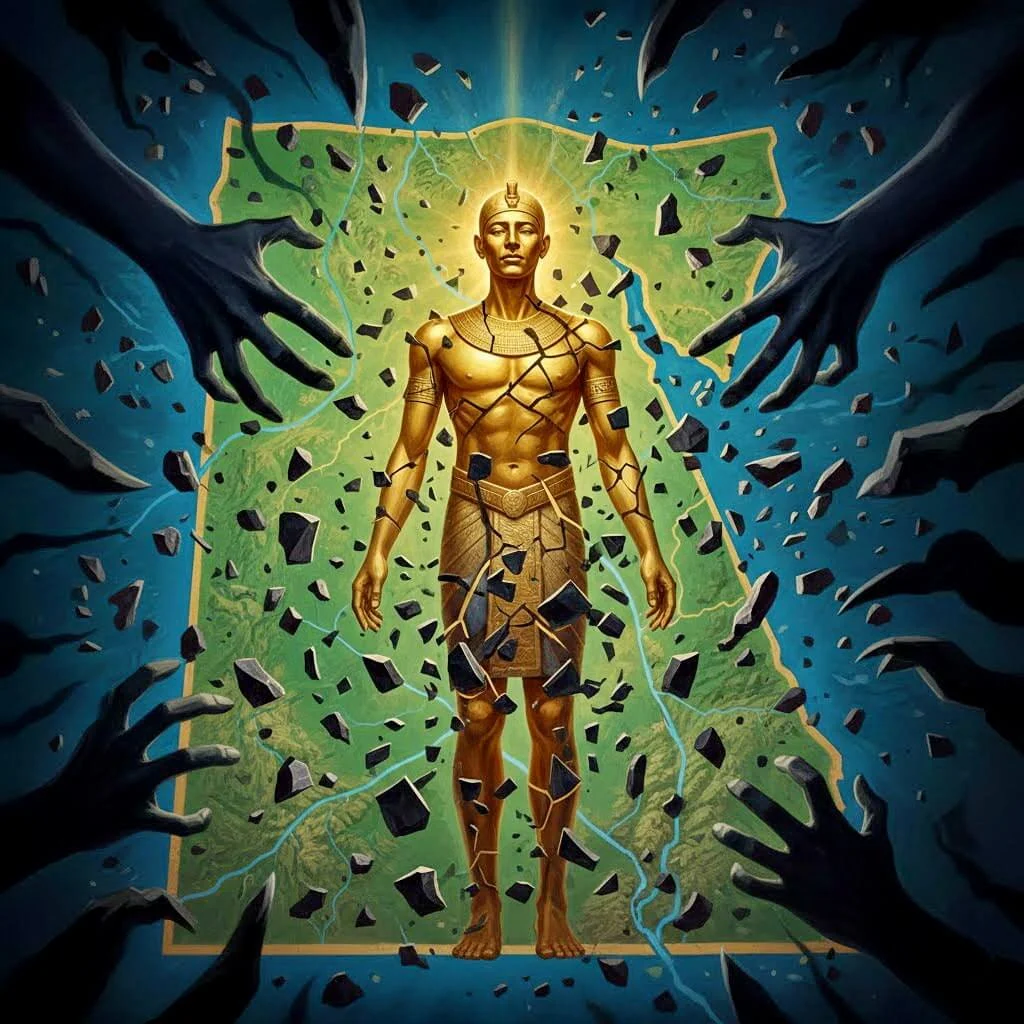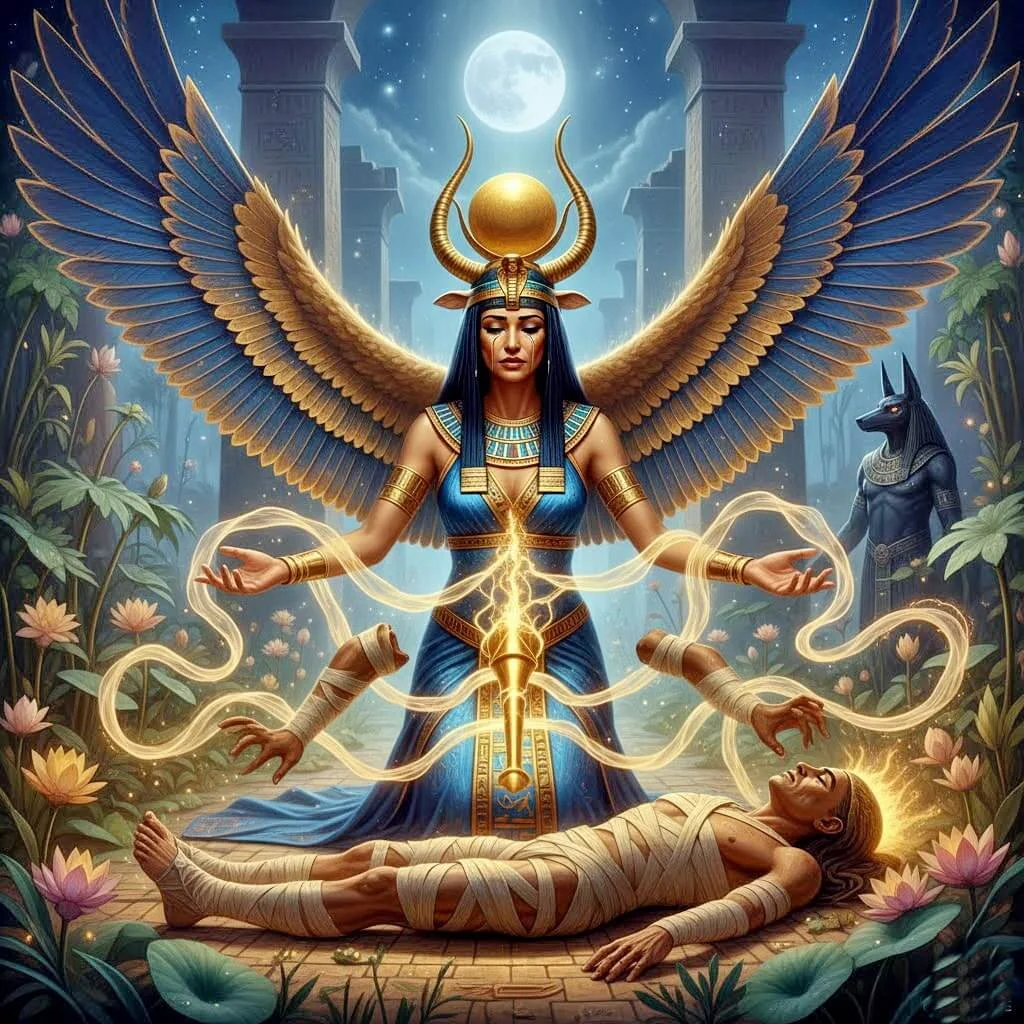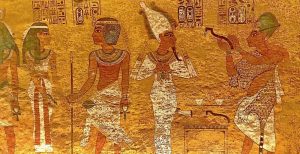Part V: The Legacy and the Conflict of Horus and Set
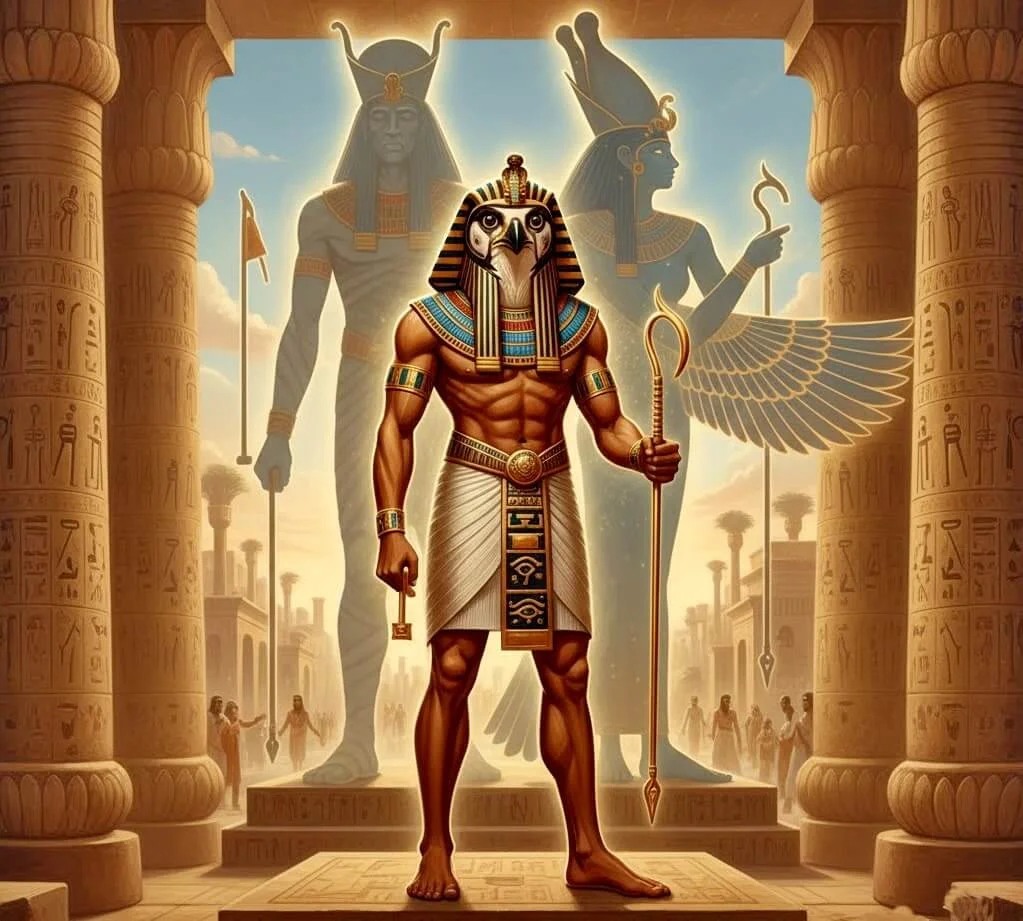
The Osiris and Isis Myth did not end with Osiris’s descent; it transitioned into the struggle for legitimate kingship, known as “The Contendings of Horus and Set.”
Isis raised Horus in secret, shielding him from his uncle Set. When Horus came of age, he challenged Set for the throne in an epic struggle that lasted 80 years. The conflict was vicious. The tribunal of the gods often mediated the dispute. Set maimed Horus, and Horus, in turn, castrated Set.
The ultimate judgment by the divine court, led by Ra, affirmed that Horus, as the legitimate heir of Osiris, was the rightful King of Egypt. This divine sanction established the core belief system of the Egyptian state for the next three millennia.
The Profound Cultural and Religious Impact
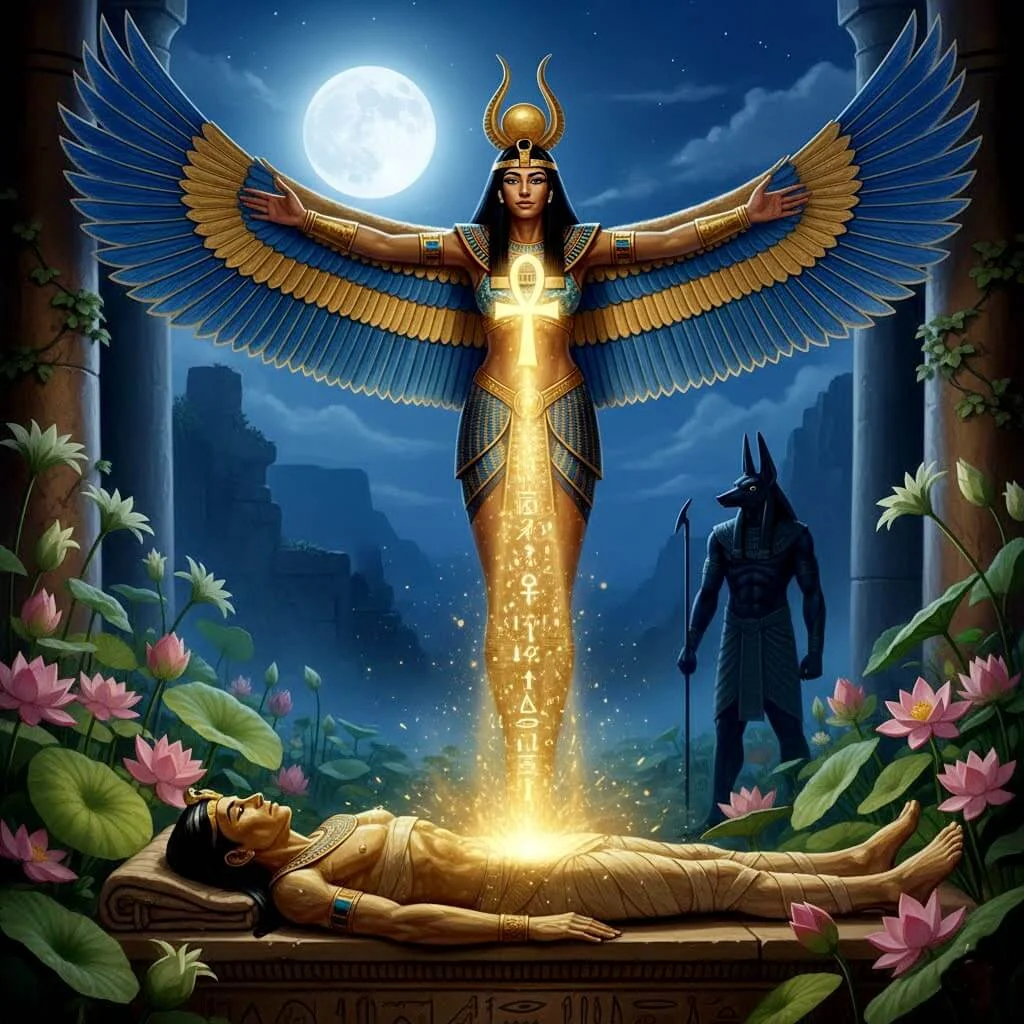
The Osiris and Isis Myth is arguably the most powerful narrative in ancient Egyptian history, shaping everything from theology to daily life. Its themes resonated far beyond the Nile, influencing later mystery cults across the Mediterranean.
1. The Blueprint for the Afterlife
Osiris’s story offered a message of hope and permanence. Every Egyptian hoped to emulate Osiris—to conquer death and be resurrected in the afterlife. The path to immortality involved:
- Mummification: This elaborate process was literally a reenactment of Isis’s work, ensuring the body was preserved for the soul’s return.
- Judgment: As the Lord of the Dead, Osiris presided over the Hall of Two Truths, where the gods weighed the deceased’s heart against the feather of Ma’at (Truth and Order).
2. Kingship and the Divine Pharaoh
The myth codified the legitimacy of the Pharaohs. Every Pharaoh was understood to be the living Horus—the rightful king on Earth. Upon death, the Pharaoh transformed into Osiris, ruling the dead and ensuring the fertility of the land. The successor then became the new Horus, ensuring an unbroken chain of divine authority.
3. Isis: The Universal Mother Goddess
Isis emerged as the preeminent goddess, celebrated not just for her magic, but for her infinite love, fierce protection, and nurturing spirit. Her devotion to her husband and son made her the ultimate role model. Her cult grew exponentially, eventually spreading throughout the Greek and Roman worlds, where people worshiped her as the patron of sailors, the giver of harvests, and the Great Mother Goddess.
4. Seeds of Monotheistic Concepts
The powerful themes of resurrection, virgin birth (in some interpretations of the Horus story, though often cited as a magical conception), and the divine saviour figure within the Osiris and Isis Myth had a deep, indirect influence on subsequent religious narratives that emerged in the region. The enduring promise of eternal life and a moral judge in the Underworld provided a framework for countless future spiritual concepts.

